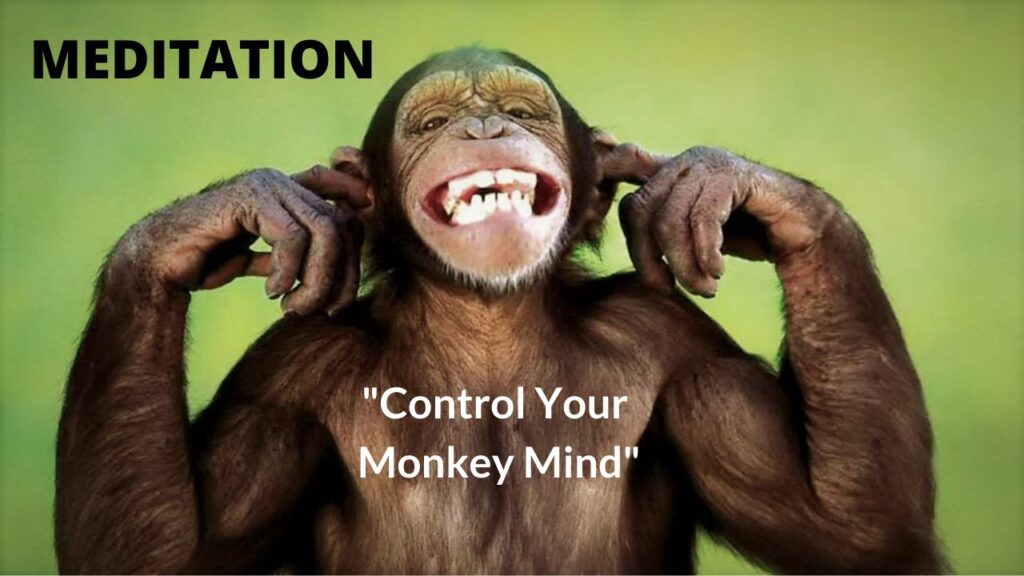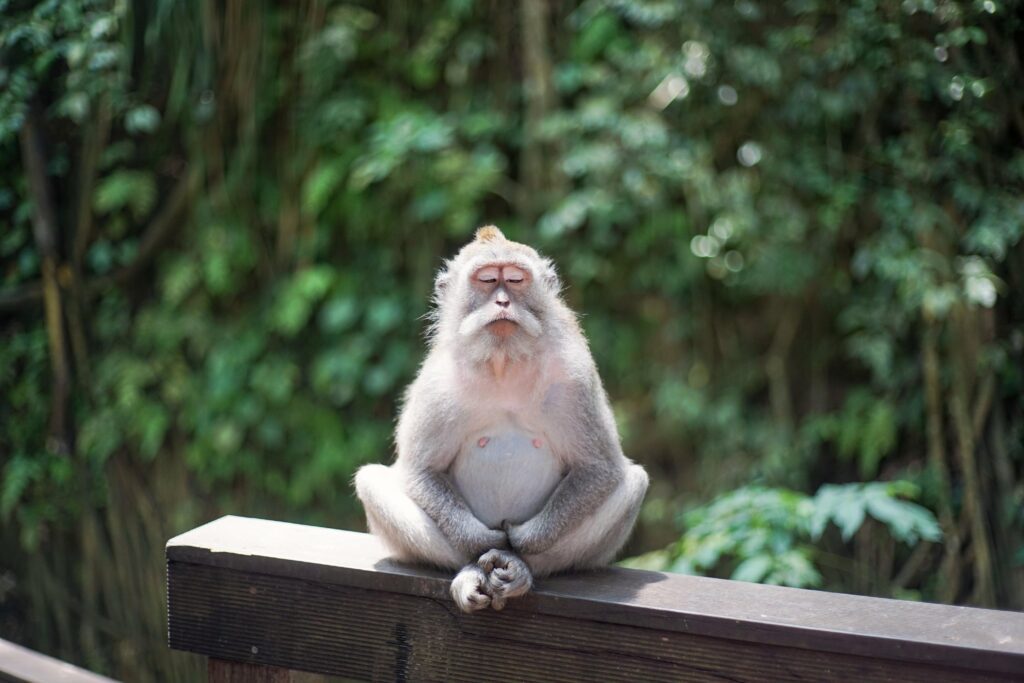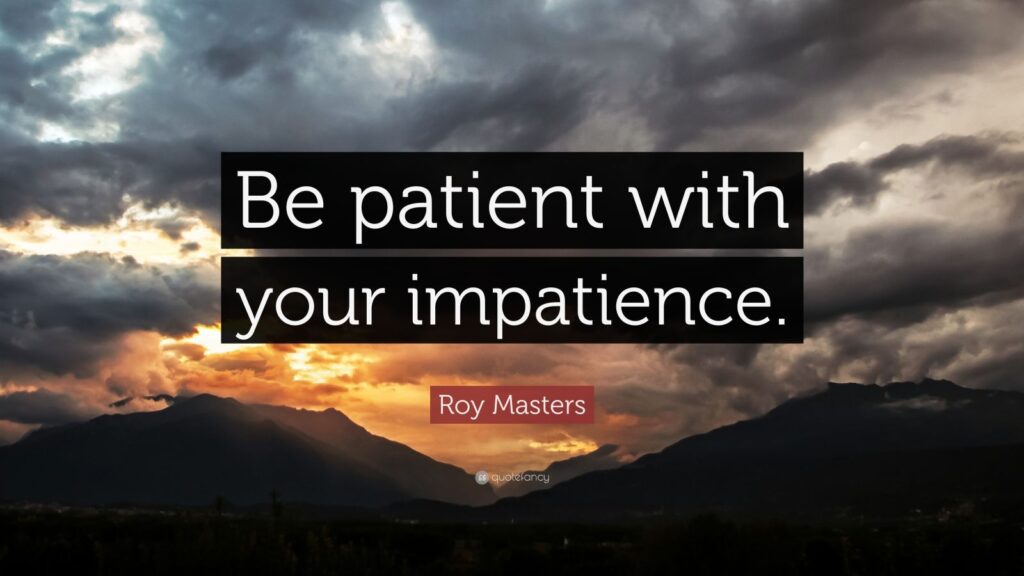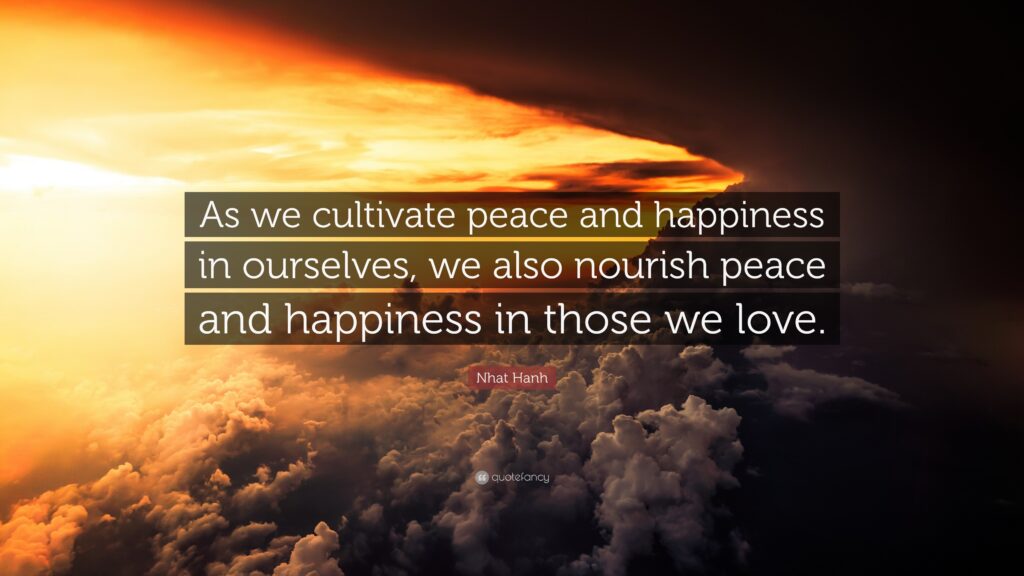6- Interrupted Attention and Overcoming Mind-Wandering

Stage Two:
Interrupted Attention and Overcoming Mind-Wandering
You will learn to work smart, not hard, using finesse, patience, and positive reinforcement
rather than willpower.
Keeping your attention on the breath may seem like a simple task, but
you’ll quickly discover how challenging it can be.
Most novice meditators are surprised by how unruly the mind is.
You may feel like you’re trying to tame a wild animal, or even that
meditation is making your mind more agitated. In reality,
you’re just becoming aware of what’s always been going on in the mind.
Recognizing this is an important first step.

Even if you’re a spiritual seeker intent on discovering the ultimate meaning of life,
if your attention didn’t wander at times, your house might burn down around you.
So, while forgetting and mind – wandering might be obstacles in meditation,
they’re a normal and necessary part of everyday life,
letting us use our limited conscious resources more efficiently .
The mind of an adept meditator still moves spontaneously in daily life,
allocating consciousness where it’s needed, but not getting captured unnecessarily.
Still,
stable attention is useful for survival,
so we all have that inherent capacity as well.
In other words,
evolution has not selected against stable attention,
even though we’re not as strongly predisposed to use it.
When we meditate,
we’re training and strengthening this inborn but less-used capacity.
By cultivating stable attention,
meditation calms the wandering mind and creates inner peace.
When attention is accompanied by greater awareness, we have strong mindfulness, meaning
we can refocus and stabilize our attention wherever and whenever it’s needed .

Our natural tendency is to quickly return to the breath, often forcefully and with self-judgment.
This reaction is typical of our approach to everyday tasks.
We rush to get back on track. During meditation, however,
if you return to the breath as soon as you realize you’ve lost it,
you’ll miss a key opportunity for training the mind.
Awakening to the present is an important opportunity to understand and appreciate
how your mind works. You’ve just had a minor epiphany, an “aha!” moment
of realizing there’s a disconnect between what you’re doing (thinking about something else)
and what you intended to do (watch the breath).
But this wasn’t something you did. Nor can you voluntarily make it happen.
The process that discovered this disconnect isn’t under your conscious control.
It happens unconsciously,
but when the “findings” become conscious,
you have an “aha!” moment of introspective awareness.

Train your mind through positive feedback.
Savor the sense of being more fully conscious and present
than when you were lost in mind-wandering.
The way to overcome mind – wandering is by training this unconscious process
to make the discovery and bring it into consciousness sooner and more often.
Yet,
how do you train something that happens unconsciously?
Simply take a moment to enjoy and appreciate “waking up” from mind-wandering.
Savor the sense of being more fully conscious and present.
Cherish your epiphany and encourage yourself to have more of them.
Conscious intention and affirmation powerfully influence our unconscious processes.
By valuing this moment,
you’re training the mind through positive reinforcement
to wake you up more quickly in the future.

Sustaining Attention on the Meditation Object Once you’ve redirected attention,
you want to increase the periods of sustained attention to the meditation object.
A technique that helps is called following the breath.
This is a series of tasks, like a game, to help you actively engage with, take interest in,
and fully investigate the breath, countering the natural tendency for attention to shift.
To begin,
try identifying the exact moment the in-breath starts and the exact moment it ends.
Likewise,
try noticing the exact moment the out-breath begins and ends.
You will find the beginning of the in – breath easy to identify
because of the sharp impact of cool, incoming air on the skin.
The start of the out – breath will probably be obvious as well, though less distinct,
since outgoing air is warmer.
By contrast,
the exact ends of the in-and out-breaths are less obvious.
You will also notice brief pauses between the in – and out – breaths,
and between the out-and in-breaths.
If you find it hard to perceive the ends of the in – and out – breaths clearly,
it helps to identify the pauses first, then work backward.
Once you’ve found the pauses with some certainty,
as well as the start and end of each part of the breath cycle,
try observing all these points with equal clarity.
These tasks engage the mind by giving it a challenge.
At first,
the sensations seem to come and go so quickly and are so subtle that it’s truly a challenge.
Yet with practice,
these tasks will stabilize your attention on the meditation object.

Willpower is not very effective for sustaining attention,
so your mind must find further challenges to keep it actively engaged.
As your perception grows sharper and you can clearly identify all the points in the breath cycle,
it becomes less challenging and your interest fades.
Remember,
willpower is not very effective for anything in meditation, including sustaining attention,
so the mind must find further challenges to stay actively engaged.
The next challenge is to observe as many different sensations as possible
during the course of each in-and out-breath, and
to discern the pauses as clearly as possible.
~
QUICK REVIEW OF STAGE TWO PRACTICE
The instructions for this Stage are simple.
You sit down, finish the Preparation for Practice,
make the gradual transition to the sensations of the breath at the tip of the nose,
and count ten breaths.
Hold the intention to follow and sustain attention on the breath sensations at the nose.
Very soon, however,
you’ll find yourself forgetting the breath and mind-wandering,
sometimes for seconds and sometimes for many minutes.
Eventually,
you’ll abruptly “wake up” to the fact that, even though you intended to watch the breath,
you’ve been thinking about something else.
Feel happy and pleased about this “aha!” moment of introspective awareness.
Then,
gently direct attention back to the breath.
To engage more fully with the meditation object, practice following the breath.
As long as you appreciate the moment of “waking up” to mind-wandering,
diligently return attention to the object, and fully engage with it,
you’re on the right track.
If you sit through the entire session without getting discouraged and
if you keep returning to the breath when your mind wanders,
consider your meditation a total success.

Focusing on the Meditation Object Without Losing Peripheral Awareness
Stages One through Four
aim at gaining more stability of attention.
Beginning meditators often try to stabilize attention by focusing intensely on the breath
and pushing everything else out of awareness.
Don’t do this.
Don’t try to limit peripheral awareness.
Instead,
to cultivate mindfulness, do just the opposite
allow sounds, sensations, thoughts, and feelings to continue in the background.
Be careful of the tendency to become so closely focused on the breath
that peripheral background awareness collapses.
If that happens, you’ll forget the breath more easily.
But if you maintain peripheral awareness,
you’ll eventually learn to notice potential distractions when they arise,
and attention is less likely to be captured.
~
If one of these background distractions does momentarily capture attention,
simply let it be while redirecting attention back to the meditation object.
The approach is always the same:
let it come, let it be, and let it go.
Learn to accept these distractions,
recognizing that they will go away by themselves, only to be replaced by others.
Stay on task while staying relaxed. Just enjoy the process.

“You” Are Not in Control of “Your” Mind
Mind-wandering happens constantly .
It’s so much a part of our normal experience that we rarely notice,
leading us to believe we are the masters of our own minds, in constant control.
Meditation shatters that myth pretty quickly.
Even the simplest instruction like “Keep your attention focused on the breath”
reveals how the mind, in a sense, has a mind of its own.
~
Believing we should be in control of the mind only creates problems for our practice.
Once we discover how little control we really have,
we may even decide something is “wrong” with the mind, that it’s not working the way it should .
When we objectify the mind like this,
we turn it into a dysfunctional “thing.”
If, on the other hand, we identify the mind with our “self,”
you may think of yourself as having failed
because you can’t prevent the mind from wandering.
Either view casts mind-wandering in an unfavorable light
and makes us feel frustrated.

Rather than pass judgment, let your meditation practice illuminate what’s really going on:
there is no self in control of the mind, and therefore nobody to blame!
The mind is a collective of mental processes
operating either through consensus, or
through a very temporary dominance of one process over the others.
One part of your mind might wear a big hat marked “I” for a short period,
but it has no inherent ability to keep that up for long.
Inevitably,
some other mental process with a different agenda and different conditioning
takes over and becomes the “I.”
If the controlling part of the mind pushes too hard or grows weaker for some reason,
then another part of the mind takes control.
In short,
there is no “you” who’s the boss of “your” mind.
Ultimately,
meditation means training a complex, multipart system (the mind) to work cooperatively,
coherently, and consistently through a shared consensus toward common goals.
If you can embrace that fact and
let go of the notions of “I,” “me, ” and my mind,”
your practice will go much more smoothly.

“Monkey-mind” makes you feel restless,
and must be dealt with differently than ordinary mind-wandering.
The antidote that calms monkey-mind is to become “grounded in the body.”
This means expanding the space in which you allow attention to move to include the entire body
and, if needed, the other senses as well.
In other words,
return to Step One or Two of the Gradual Four – Step Transition to the Meditation Object
described in Stage One.
The agitation of monkey-mind is due to thoughts and emotions,
so “body awareness” works by shifting attention and awareness away from
the contents and activities of the mind.
Some grounding techniques include scanning the sensations of the body part by part,
attending to any strong bodily sensation, evoking whole body awareness, or
becoming aware of other sensations, like sounds.
The basic rule for training the mind in meditation is to always intentionally select the focus of attention. That is,
you must intentionally choose the “area”
breath sensations, bodily sensations, thoughts, or some combination you want attention restricted to. Every practice for achieving stable attention is based on this principle.
With monkey-mind, attention is constantly moving,
so you finesse the situation by intentionally expanding this area.
You let the mind keep moving ,
but only within the boundaries that you’ve intentionally set.
Instead of trying to hold the monkey still, you give it a larger cage to move in.

OVERCOMING IMPATIENCE AND CULTIVATING JOY
It’s inevitable that, fairly soon , you’ll get impatient and think ,
“This isn’t working, there must be an easier way,” or
“I could be doing something better with my time.”
These thoughts and feelings arise because
something you wanted, hoped for, or expected hasn’t happened.
For instance,
you may have thought that after a period of diligent practice, you’d be at Stage Three.
Instead,
you find your attention isn’t very stable, and there’s still a lot of mind-wandering going on.
Disappointment that meditation isn’t meeting your expectations
gets combined with worldly desire for some alternative form of gratification.
Unfulfilled expectations and waning enthusiasm bring boredom,
which amplifies any aversion you feel toward physical or mental discomfort.
As the mind focuses on these negative results, doubt may arise.
The end result is the insidious and pervasive emotional state of impatience.
We tend to identify with it, thinking, “I am impatient,” which helps sustain it, undermines our motivation, and triggers other unhelpful thoughts like, “I’m just too impatient to meditate today.”

The less harmony among different parts of your mind,
the more dissatisfaction and impatience you’ll feel.
The more impatience, the greater the disharmony, creating a feedback loop .
If you keep trying to meditate with this divided and therefore less effective mind,
it just leads to more disappointment and doubt, ultimately making you even more impatient.
You have set up a “disharmony – dissatisfaction-impatience” feedback loop:
the less harmony among the different parts of the mind,
the more dissatisfaction and impatience you’ll feel.
And the more impatience, the greater the disharmony
as different “minds” keep pressing harder for alternatives to meditation.
And on it goes.
Usually we try to resolve the internal conflict in one of two unskillful ways.
We give in and do something else, or we try to force the mind to comply.
But when one part of the mind tries to force itself on other parts,
this only creates a struggle that feels like an exercise of willpower –
and willpower can never succeed in overcoming this kind of internal resistance.
As one part of the mind tries harder and harder to rule the roost,
the struggle only increases,
feeding the disharmony-dissatisfaction-impatience cycle.

By making meditation satisfying and enjoyable,
the part of the mind that wants to meditate can get the other parts to stop resisting and join in.
Mental processes come into harmony.
As the mind becomes more unified, there’s less internal conflict.
Attention grows more stable, and feelings of pleasure and happiness increase.
As they increase,
the different mental processes come into greater and greater harmony until the mind enters a state of joy, creating a “harmony-joy” feedback loop
the opposite of the disharmony-dissatisfaction-impatience loop.
In each Stage, cultivate peace, contentment, happiness, and joy at every opportunity.
Bringing the different parts of the mind into harmony is crucial for achieving
one of the major goals of meditation,
unification of mind.
Therefore, in each Stage, cultivate
peace, contentment, happiness, and joy at every opportunity.
Also, create these feelings in every wholesome way you can in daily life
and bring this joy to your practice.

This series of articles highlight and focus on the first 3 stages
of the 10 stage process towards the Ultimate goal of Awakening.
I have come to regard these first three stages as outlined by
Neuro Scientist John Yates… AKA Culadasa
to be the most useful way to learn how to meditate
for Ultimate goal of meditation.

With his neuro science along with his psychology background and lifelong Buddhist Practice,
he has the unique qualifications to bring together the complete Spiritual Path together
in the most thorough way.
This subject has many different traditions and perspectives that for the most part
evolved separately in various locations around the world, and yet,
they all point toward the very same outcome…
Attaining the highest form of human consciousness possible, with names such as…
Enlightened, Awakening, Self-Realized… that all offer the Ultimate goal and Fruition of…
Liberation of pain and suffering.
Beyond these first 3 stages is beyond the scope of what I can effectively share,
but for those so inspired… This book is a must read:
The Mind Illuminated:
A Complete Meditation Guide Integrating Buddhist Wisdom and Brain Science
for Greater Mindfulness
by – John Yates; Matthew Immergut; Jeremy Graves